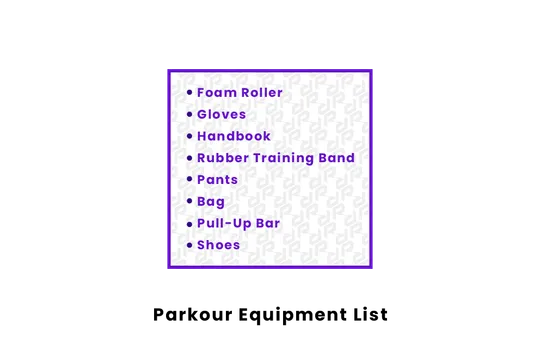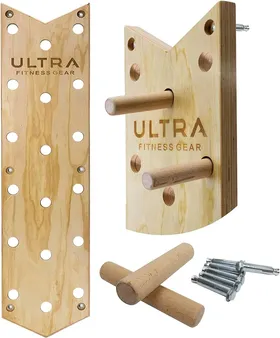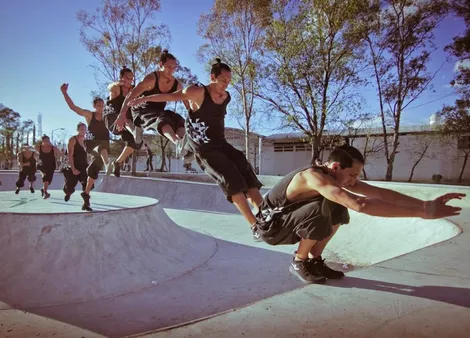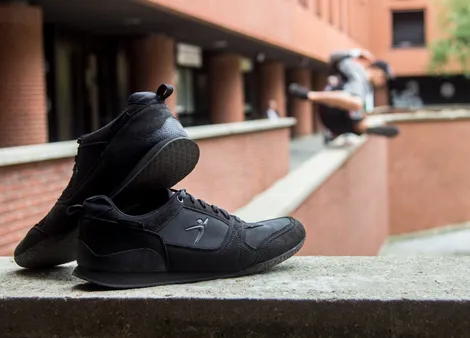Table of Contents
Welcome to Kizworld, your ultimate source for parkour knowledge and ise. As you embark on your parkour journey, having the right equipment and gear is essential for pushing your limits and staying safe. In this comprehensive guide, we'll take you through The best parkour equipment and gear, helping you select the perfect items to elevate your skills and conquer the urban landscape with confidence. From clothing and shoes to protective gear and accessories, we've got you covered. Get ready to explore the world of parkour with the best equipment and gear by your side.
The Best Parkour Equipment and Gear for Thrilling Urban Adventures
I. The Essential Gear for Mastering Parkour
The Essential Gear for Mastering Parkour
Clothing
- Loose-fitting, comfortable clothing that allows for freedom of movement.
- Breathable fabrics that wick away sweat and keep you cool.
- Durable materials that can withstand the rigors of parkour training.
Related: How to Choose the Right Parkour Equipment and Gear
Shoes
- Flat-soled shoes with good traction and support.
- Shoes that are lightweight and flexible.
- Shoes that are designed for parkour or other high-impact activities.
Related: The Best Parkour Shoes and Gloves
Protective Gear
- Knee pads to protect your knees from impact.
- Elbow pads to protect your elbows from scrapes and bruises.
- Wrist guards to protect your wrists from sprains and fractures.
Related: The Best Parkour Equipment and Gear
Accessories
- A water bottle to stay hydrated during your training sessions.
- A towel to wipe away sweat and keep yourself clean.
- A change of clothes in case you get wet or dirty.
Clothing | Shoes | Protective Gear | Accessories |
Loose-fitting, comfortable clothing | Flat-soled shoes with good traction and support | Knee pads | Water bottle |
Breathable fabrics that wick away sweat and keep you cool | Shoes that are lightweight and flexible | Elbow pads | Towel |
Durable materials that can withstand the rigors of parkour training | Shoes that are designed for parkour or other high-impact activities | Wrist guards | Change of clothes |
Related: How to Get Started with Parkour as a Beginner
II. Choosing the Right Parkour Equipment and Gear
Consider Your Skill Level
- If you are a beginner, you may want to start with a basic set of gear that includes a pair of shoes, a pair of knee pads, and a pair of elbow pads.
- As you progress in your training, you can add more specialized gear, such as wrist guards, a helmet, and a crash pad.
Related: The Best Parkour Equipment and Gear
Consider Your Budget
- Parkour gear can range in price from a few dollars to hundreds of dollars.
- It is important to set a budget before you start shopping so that you do not overspend.
- There are many ways to save money on parkour gear, such as buying used gear or shopping online.
Related: How to Choose the Right Parkour Equipment and Gear
Consider Your Personal Preferences
- There is no one-size-fits-all approach to choosing parkour gear.
- It is important to choose gear that you are comfortable with and that fits your personal style.
- There are many different brands and styles of parkour gear available, so you are sure to find something that you like.
Related: The Best Parkour Equipment and Gear
III. Choosing the Right Equipment for Every Skill Level
Choosing the Right Equipment for Every Skill Level
Beginner
- Start with basic equipment: a helmet, knee pads, elbow pads, and wrist guards.
- Choose clothing that is comfortable and allows for freedom of movement.
- Select shoes that provide good traction and support.
As you progress, you can add more specialized equipment, such as a harness, crash pad, and chalk bag.
Intermediate
- Invest in higher-quality equipment that is designed for durability and performance.
- Consider purchasing a variety of equipment to suit different types of terrain and conditions.
- Make sure your equipment fits properly and is in good condition.
With the right equipment, you can take your parkour skills to the next level.
Advanced
- Choose equipment that is lightweight and allows for maximum mobility.
- Experiment with different types of equipment to find what works best for you.
- Be prepared to replace your equipment regularly as it wears out.
With the right equipment, you can push your limits and achieve your parkour goals.
Skill Level | Essential Equipment | Optional Equipment |
Beginner | Helmet, knee pads, elbow pads, wrist guards, comfortable clothing, shoes with good traction and support | Harness, crash pad, chalk bag |
Intermediate | Higher-quality helmet, knee pads, elbow pads, wrist guards, clothing designed for parkour, shoes with excellent traction and support | Variety of equipment for different terrain and conditions |
Advanced | Lightweight helmet, knee pads, elbow pads, wrist guards, clothing that allows for maximum mobility | Variety of equipment to experiment with |
No matter your skill level, it is important to choose parkour equipment that is safe, comfortable, and allows you to perform at your best.
The Best Parkour Equipment and GearHow to Choose the Right Parkour Equipment and Gear
IV. Essential Accessories
Essential Accessories
In addition to the basic clothing and shoes, there are a few essential accessories that can help you stay safe and perform at your best while parkouring. These include:
- Crash pads: These are thick, padded mats that can be used to cushion your landings and protect you from injuries.
- Spotting belt: This is a belt that is worn around the waist of the traceur and held by a spotter. The spotter can use the belt to help the traceur maintain their balance and prevent them from falling.
- Chalk: This is a powder that is applied to the hands to help improve grip. It can also be used to mark obstacles and landing zones.
- Water bottle: It is important to stay hydrated while parkouring, so make sure to bring a water bottle with you.
Accessory | Benefits |
Crash pads | Cushion landings and protect from injuries |
Spotting belt | Help maintain balance and prevent falls |
Chalk | Improve grip and mark obstacles |
Water bottle | Stay hydrated during parkour sessions |
First aid kit | Treat minor injuries that may occur |
V. Maintenance and Customization for Optimal Performance
Parkour is a sport that requires a significant amount of maintenance and customization to ensure optimal performance. Proper care and upkeep of your equipment can help prevent injuries, extend the lifespan of your gear, and improve your overall training experience.
Equipment | Maintenance | Customization |
|---|---|---|
Clothing | Wash regularly, dry thoroughly, and avoid harsh detergents. | Choose clothing that is comfortable, breathable, and allows for freedom of movement. |
Shoes | Clean and dry after each use, inspect for wear and tear, and replace as needed. | Select shoes that provide good support, cushioning, and traction. |
Protective Gear | Inspect regularly for damage, clean and dry after each use, and store in a cool, dry place | Choose protective gear that fits properly and provides adequate protection for your head, knees, elbows, and wrists. |
Accessories | Clean and dry after each use, inspect regularly for wear and tear, and replace as needed. | Select accessories that are durable, comfortable, and suitable for your training needs. |
In addition to maintaining and customizing your equipment, it is also important to follow proper safety guidelines while practicing parkour.
- Always warm up before training and cool down afterwards.
- Train in a safe environment with proper supervision.
- Be aware of your surroundings and potential hazards.
- Start with basic skills and gradually progress to more advanced techniques.
- Listen to your body and take breaks when needed.
By following these tips, you can help ensure that your parkour training is safe, enjoyable, and productive.
Do you want to learn more about parkour? Check out our related articles on Top Parkour Competitions and Events and Most Famous Parkour Practitioners and Teams!
VI. Conclusion
As you continue your parkour journey, remember that the best equipment and gear are those that allow you to move freely, safely, and confidently. Choose items that fit your skill level, budget, and personal preferences, and always prioritize safety. With the right equipment and a commitment to practice, you'll be well on your way to mastering the art of parkour and conquering the urban landscape.